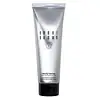What's inside
What's inside
 Key Ingredients
Key Ingredients

No key ingredients
 Benefits
Benefits

 Concerns
Concerns

 Ingredients Side-by-side
Ingredients Side-by-side

Water
Skin ConditioningCocamidopropyl Hydroxysultaine
CleansingGlycolic Acid
BufferingGlycerin
HumectantPEG-6 Cocamide
EmulsifyingPolyacrylate Crosspolymer-6
Emulsion StabilisingDisodium Cocoyl Glutamate
CleansingHydroxyacetophenone
AntioxidantSuccinoglycan
Skin ConditioningSimmondsia Chinensis Seed Oil
EmollientCalendula Officinalis Flower Extract
MaskingCitrus Aurantium Dulcis Peel Oil
MaskingCitrus Paradisi Peel Oil
MaskingLeuconostoc/Radish Root Ferment Filtrate
AntimicrobialUrea
BufferingAllantoin
Skin ConditioningPolyquaternium-51
Skin ConditioningTrehalose
HumectantCaprylyl Glycol
EmollientSodium Hyaluronate
HumectantTocopherol
AntioxidantHydrogenated Palm Glycerides Citrate
EmollientGlyceryl Oleate
EmollientCoconut Acid
Cleansing1,2-Hexanediol
Skin ConditioningT-Butyl Alcohol
PerfumingCoco-Glucoside
CleansingSodium PCA
HumectantSodium Chloride
MaskingSodium Hydroxide
BufferingCitric Acid
BufferingPotassium Sorbate
PreservativeSodium Benzoate
MaskingLimonene
PerfumingWater, Cocamidopropyl Hydroxysultaine, Glycolic Acid, Glycerin, PEG-6 Cocamide, Polyacrylate Crosspolymer-6, Disodium Cocoyl Glutamate, Hydroxyacetophenone, Succinoglycan, Simmondsia Chinensis Seed Oil, Calendula Officinalis Flower Extract, Citrus Aurantium Dulcis Peel Oil, Citrus Paradisi Peel Oil, Leuconostoc/Radish Root Ferment Filtrate, Urea, Allantoin, Polyquaternium-51, Trehalose, Caprylyl Glycol, Sodium Hyaluronate, Tocopherol, Hydrogenated Palm Glycerides Citrate, Glyceryl Oleate, Coconut Acid, 1,2-Hexanediol, T-Butyl Alcohol, Coco-Glucoside, Sodium PCA, Sodium Chloride, Sodium Hydroxide, Citric Acid, Potassium Sorbate, Sodium Benzoate, Limonene
Water
Skin ConditioningPotassium Myristate
EmulsifyingGlycerin
HumectantPotassium Behenate
CleansingSodium Methyl Cocoyl Taurate
CleansingPotassium Palmitate
EmulsifyingPotassium Laurate
EmulsifyingPotassium Stearate
CleansingPersea Gratissima Oil
Skin ConditioningTriticum Vulgare Germ Oil
EmollientSimmondsia Chinensis Seed Oil
EmollientVitis Vinifera Seed Oil
EmollientSesamum Indicum Seed Oil
EmollientRosa Canina Fruit Oil
EmollientLimnanthes Alba Seed Oil
Skin ConditioningOlea Europaea Fruit Oil
MaskingPrunus Amygdalus Dulcis Oil
Skin ConditioningOenothera Biennis Oil
EmollientPrunus Armeniaca Kernel Oil
MaskingBrassica Campestris Seed Oil
Skin ConditioningCitrus Grandis
Lavandula Angustifolia Extract
Skin ConditioningRosmarinus Officinalis Leaf
Skin ConditioningSqualane
EmollientCetearyl Alcohol
EmollientPetrolatum
EmollientButyrospermum Parkii Butter
Skin ConditioningMethyldihydrojasmonate
MaskingPolyquaternium-7
PEG-3 Distearate
EmulsifyingDisodium EDTA
Limonene
PerfumingLinalool
PerfumingMethylchloroisothiazolinone
PreservativeMethylisothiazolinone
PreservativeWater, Potassium Myristate, Glycerin, Potassium Behenate, Sodium Methyl Cocoyl Taurate, Potassium Palmitate, Potassium Laurate, Potassium Stearate, Persea Gratissima Oil, Triticum Vulgare Germ Oil, Simmondsia Chinensis Seed Oil, Vitis Vinifera Seed Oil, Sesamum Indicum Seed Oil, Rosa Canina Fruit Oil, Limnanthes Alba Seed Oil, Olea Europaea Fruit Oil, Prunus Amygdalus Dulcis Oil, Oenothera Biennis Oil, Prunus Armeniaca Kernel Oil, Brassica Campestris Seed Oil, Citrus Grandis, Lavandula Angustifolia Extract, Rosmarinus Officinalis Leaf, Squalane, Cetearyl Alcohol, Petrolatum, Butyrospermum Parkii Butter, Methyldihydrojasmonate, Polyquaternium-7, PEG-3 Distearate, Disodium EDTA, Limonene, Linalool, Methylchloroisothiazolinone, Methylisothiazolinone
 Reviews
Reviews

Ingredients Explained
These ingredients are found in both products.
Ingredients higher up in an ingredient list are typically present in a larger amount.
Glycerin is already naturally found in your skin. It helps moisturize and protect your skin.
A study from 2016 found glycerin to be more effective as a humectant than AHAs and hyaluronic acid.
As a humectant, it helps the skin stay hydrated by pulling moisture to your skin. The low molecular weight of glycerin allows it to pull moisture into the deeper layers of your skin.
Hydrated skin improves your skin barrier; Your skin barrier helps protect against irritants and bacteria.
Glycerin has also been found to have antimicrobial and antiviral properties. Due to these properties, glycerin is often used in wound and burn treatments.
In cosmetics, glycerin is usually derived from plants such as soybean or palm. However, it can also be sourced from animals, such as tallow or animal fat.
This ingredient is organic, colorless, odorless, and non-toxic.
Glycerin is the name for this ingredient in American English. British English uses Glycerol/Glycerine.
Learn more about GlycerinLimonene is a fragrance that adds scent and taste to a formulation.
It's found in the peel oil of citrus fruits and other plants such as lavender and eucalyptus. The scent of limonene is generally described as "sweet citrus".
Limonene acts as an antioxidant, meaning it helps neutralize free radicals.
When exposed to air, oxidized limonene may sensitize the skin. Because of this, limonene is often avoided by people with sensitive skin.
The term 'fragrance' is not regulated in many countries. In many cases, it is up to the brand to define this term. For instance, many brands choose to label themselves as "fragrance-free" because they are not using synthetic fragrances. However, their products may still contain ingredients such as essential oils that are considered a fragrance.
Learn more about LimoneneThis oil comes from the seeds of the desert shrub called Jojoba. It is more commonly known as jojoba oil, a non-comedogenic oil.
Jojoba oil does not contain fragrance and has many fatty-acids, making it a great soothing ingredient.
It also contains Vitamin E, a great moisturizing ingredient. Vitamin E is also an antioxidant and protects your skin against oxidative damage.
This ingredient humectant properties, meaning it helps draw moisture from the air. This helps keep your skin hydrated.
While jojoba has antibacterial properties, it is only able to kill some strains of bacteria.
Studies also show it helps in wound healing. In fact, Indigenous cultures have used jojoba as a moisturizer and to help treat burns for centuries.
Fun fact: Jojoba oil similar to natural human skin sebum, so it has a great effect on dry skin. It is also promising with helping to regulate sebum production.
Due to its fatty acid content, Jojoba oil may not be fungal acne safe. We recommend speaking with a professional if you have any concerns.
Learn more about Simmondsia Chinensis Seed OilWater. It's the most common cosmetic ingredient of all. You'll usually see it at the top of ingredient lists, meaning that it makes up the largest part of the product.
So why is it so popular? Water most often acts as a solvent - this means that it helps dissolve other ingredients into the formulation.
You'll also recognize water as that liquid we all need to stay alive. If you see this, drink a glass of water. Stay hydrated!
Learn more about Water